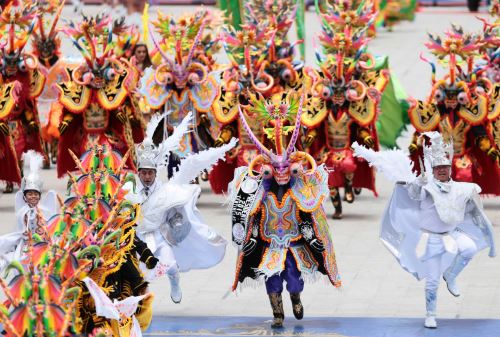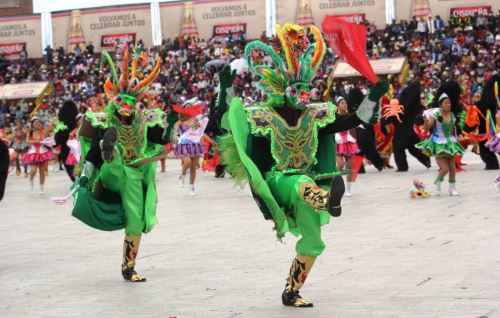Peru's South-Andean Puno region is putting the finishing touches for the great parade and veneration ceremony to honor Virgen de la Candelaria, from Jan 29 to Feb 12.
Deemed one of the Inca nation's most important cultural manifestations, the festivity also bears the title of UNESCO Intangible Cultural Heritage.
Over 80 dancing groups currently work on the last details and rehearsals to delight thousands of attendees, Regional Federation of Folklore and Culture of Puno Head Yenny Silva informed.
Top dancing comparsas (parade units) include Sicuris Clavelitos Rojos de Huancane, Unucajas de Azangaro, Ayarachis de Paratia-Lampa, Chacareros de Caritamaya de Acora, Asociacion Cultural Kajelos Estudiantes de Laraqueri and Sicuris del barrio Mañazo.

Trajes de luces (traditional eye-catching costume) dancing group highlights include Morenada Laykakota, Morenada del barrio Porteño, Tuntuna UNI, Caporales San Juan, Caporales Romeos de Candelaria, Llamerada de Asociacion Cultural Brisas del Titicaca, Diablada Azoguini, among others.
But performers are not the only ones preparing for this blend of music, dance and religious faith. The festival would not be possible without the embroiderers and mask-makers, who devote the whole year to costume-making.

Most artisan ateliers are comprised of family members, whose embroidery skills are handed down from one generation to the next.
The craft also demands delicate prowess to place the tiny multi-color stones, sequins, pearls and golden threads that make up Candelaria dancers' signature customs.
Cultural Heritage
Puno's Festivity of Virgen de la Candelaria was included into UNESCO Intangible Cultural Heritage of Humanity on November 27, 2014.
The festival constitutes one of the country's biggest and lengthiest cultural manifestations. A distinctive expression of living culture, it welcomes tens of thousands of local and foreign visitors every year.